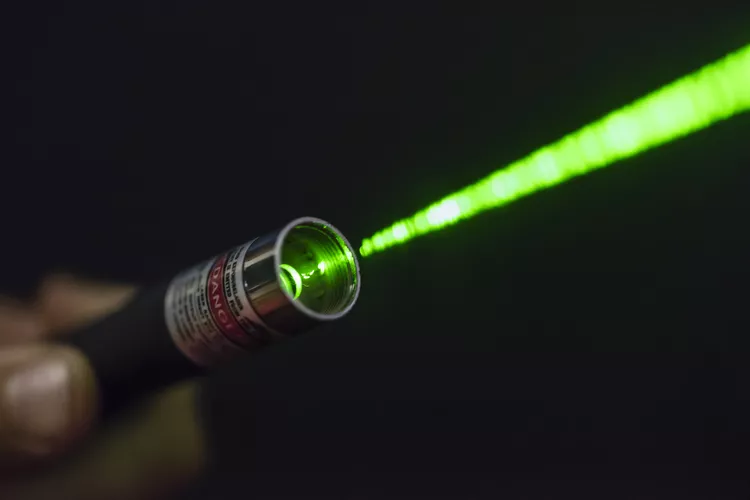Animal Care
Is it okay to use laser Pointers Bad for Dogs

Laser pointers have grown in popularity for a variety of reasons, including as toys for pets. Concerns over whether or not these types of lasers can harm a dog are often discussed though so it’s important for a first-time dog owner to know how to keep their pets safe and happy while still allowing a little fun.
What Are Laser Pointers?
Laser pointers are found in all sorts of dog toys or simply by themselves. They emit a colored beam of concentrated light. When this light hits a surface such as a floor or wall, a colored dot is seen. Many laser pointers have on/off switches or buttons that are pressed to control when and where the light is shining. There are different classifications of lasers based on their potential to cause damage and laser pointers are considered to be class II or class IIIA lasers depending on how many milliwatts of power they have.
Classes of Lasers
Different classes of lasers emit different levels of milliwatts and there are four different classes visible lasers can be placed in according to the American National Standard Identification (ANSI), the Food and Drug Administration (FDA), and the International Electrotechnical Commission (IEC).
- Class I: This is the lowest and safest class of laser. It is considered to be safe under normal use and emits less than 0.039 mW of power. It is not considered to be a skin or eye hazard. CD and DVD players typically contain class I lasers.
- Class II: This class of laser emits between 0.04 and 0.99 mW of power. Laser pointers can be in this class and these types of lasers can be harmful to eyes.
- Class IIIA: Lasers that emit between 1 and 4.99 mW of power are class IIIA lasers. These lasers are more powerful and dangerous than class II lasers so the potential harm they can cause to eyes increases. They may also be referred to as class IIIR and are may be used in laser pointers.
- Class IIIB: These lasers emit power between 5 mW and 499.9 mW so they can be much more powerful than a class IIIA laser. These lasers can heat up and even burn skin or a surface if at close range for a long enough period of time. Laser pointers are not class IIIB lasers.
- Class IV: This class of laser emits power over 500 mW and can instantly burn skin and surfaces. Laser pointers are not class IV lasers.
Lasers will also emit various colors including red, red-orange, orange, yellow, green, and blue.
Problems with Laser Pointers
Due to the potential for eye damage and burns, laser pointers can be dangerous for people as well as dogs. Class II are safer than class IIIA laser pointers but either can cause damage to a dog’s eyes if they are shone into them for even a few seconds. This is most commonly done on accident, but the risk remains.
Aside from the eye danger that laser pointers pose, these little beams of light can cause some serious frustration for a dog. Owners may find it fun to watch a dog chase a dot of light like it’s prey but this can actually be very frustrating for a dog since it is never able to actually catch the light like it would a different type of toy. This means there is never a reward for chasing the light so some dogs may obsess over lights from other places. Reflections onto the wall, floor, and ceiling along with shadows can be obsessed over by a dog that is frustrated with being unable to catch the light. Other obsessive compulsive behaviors can then grow out of this behavior.
Frustration can also lead to destructive behaviors. Some dogs that are unable to catch the light from the laser pointer end up digging, scratching, and chewing at the last place they saw the light in an attempt to catch it. They may also knock household items over causing damage to other things.
Alternatives to Laser Pointers
Thankfully there are many alternatives to using laser pointers as toys. Toys that a dog can physically touch, chew, catch, smell, and feel are much better options to laser pointers. They allow a dog to exhibit natural behaviors such as chasing, catching, and chewing without the frustration that laser pointers can cause.















